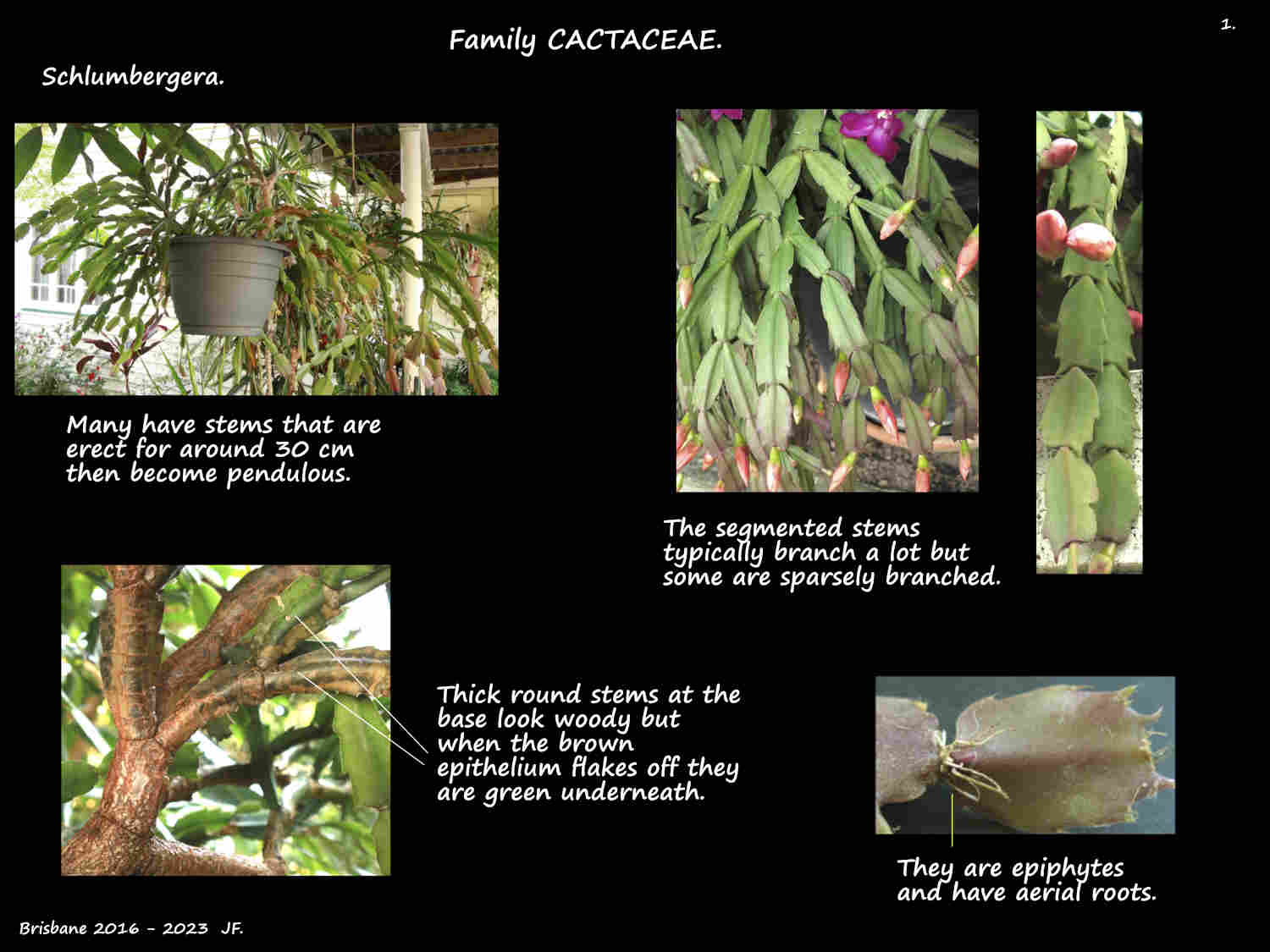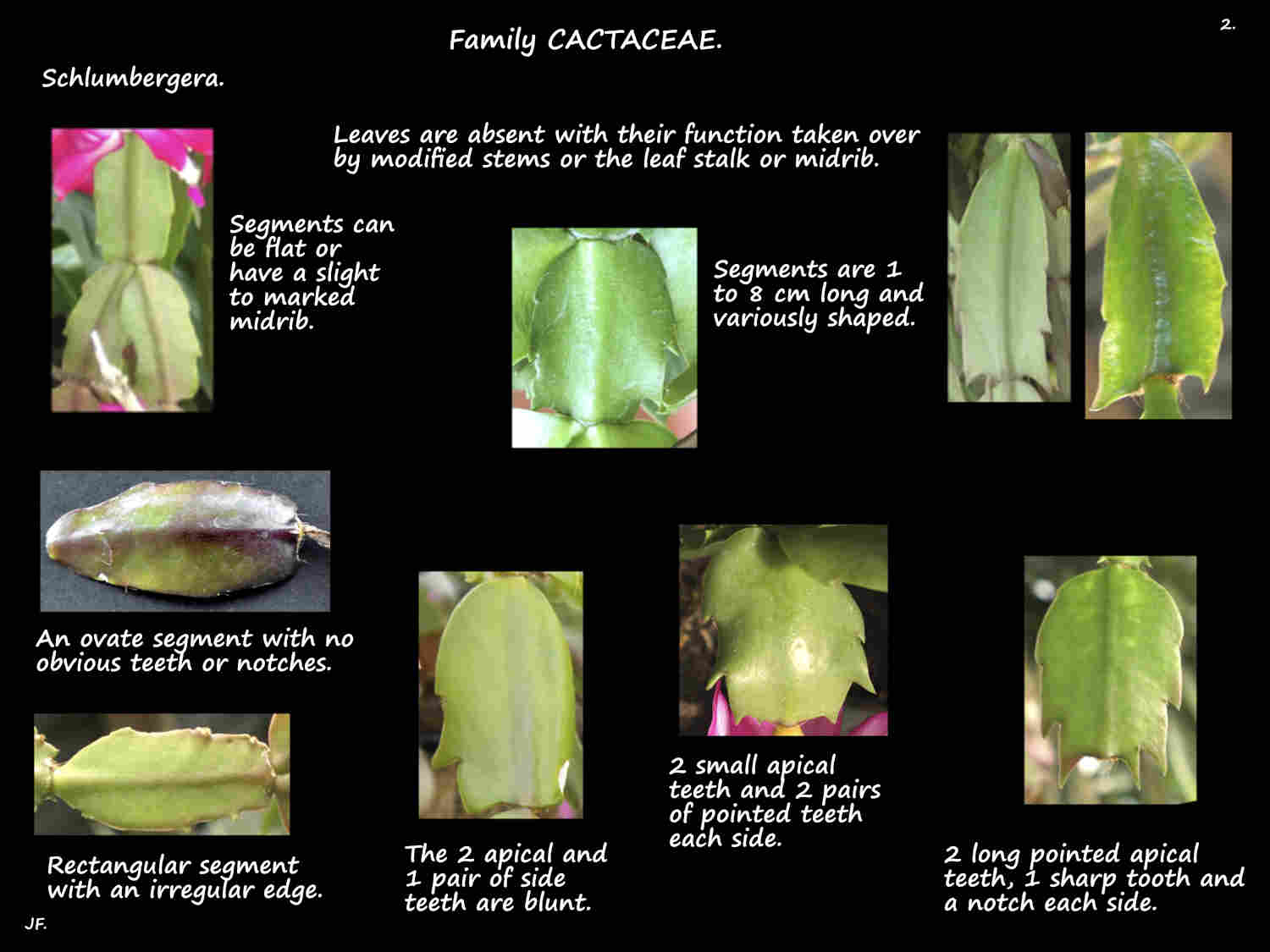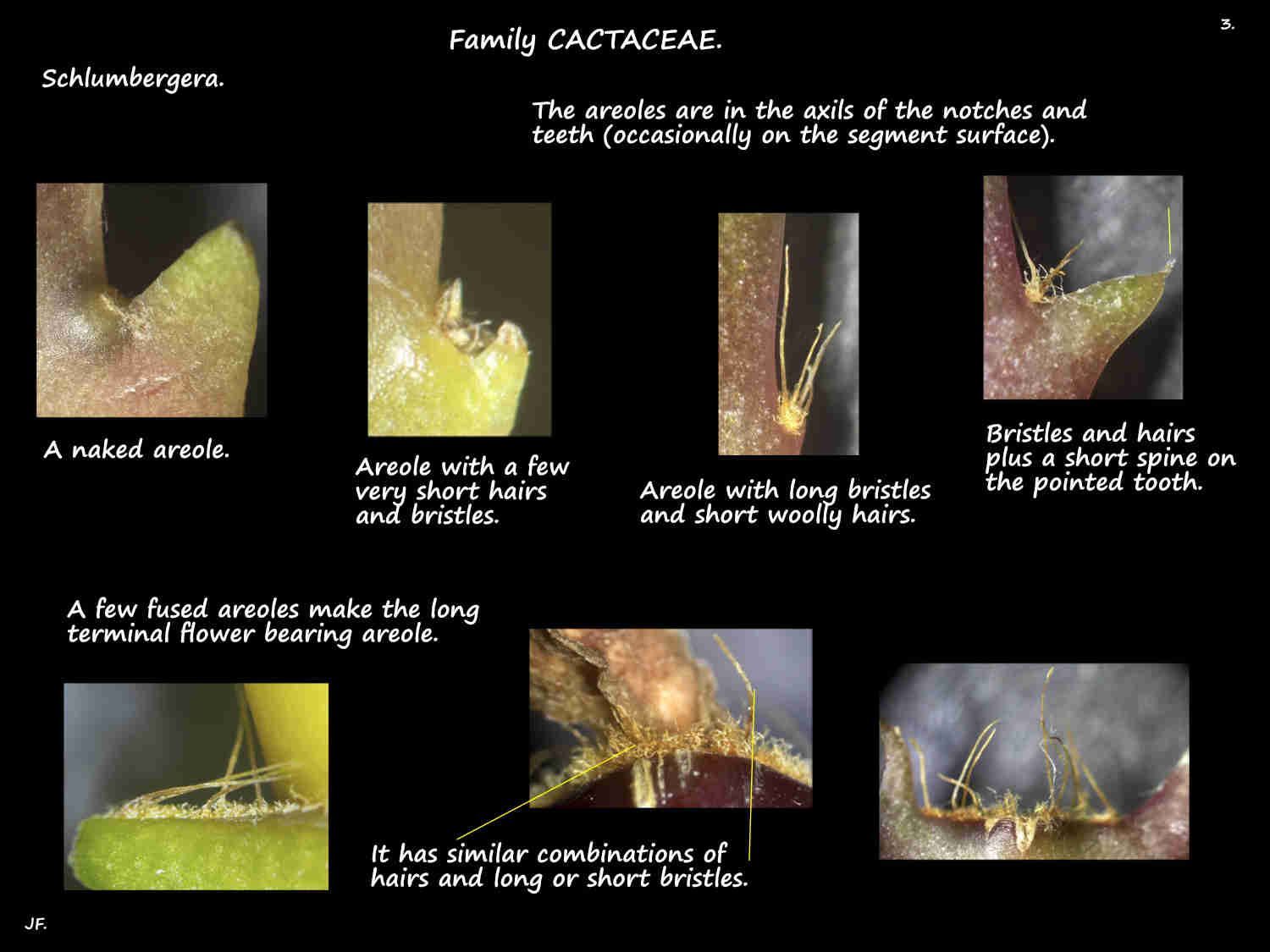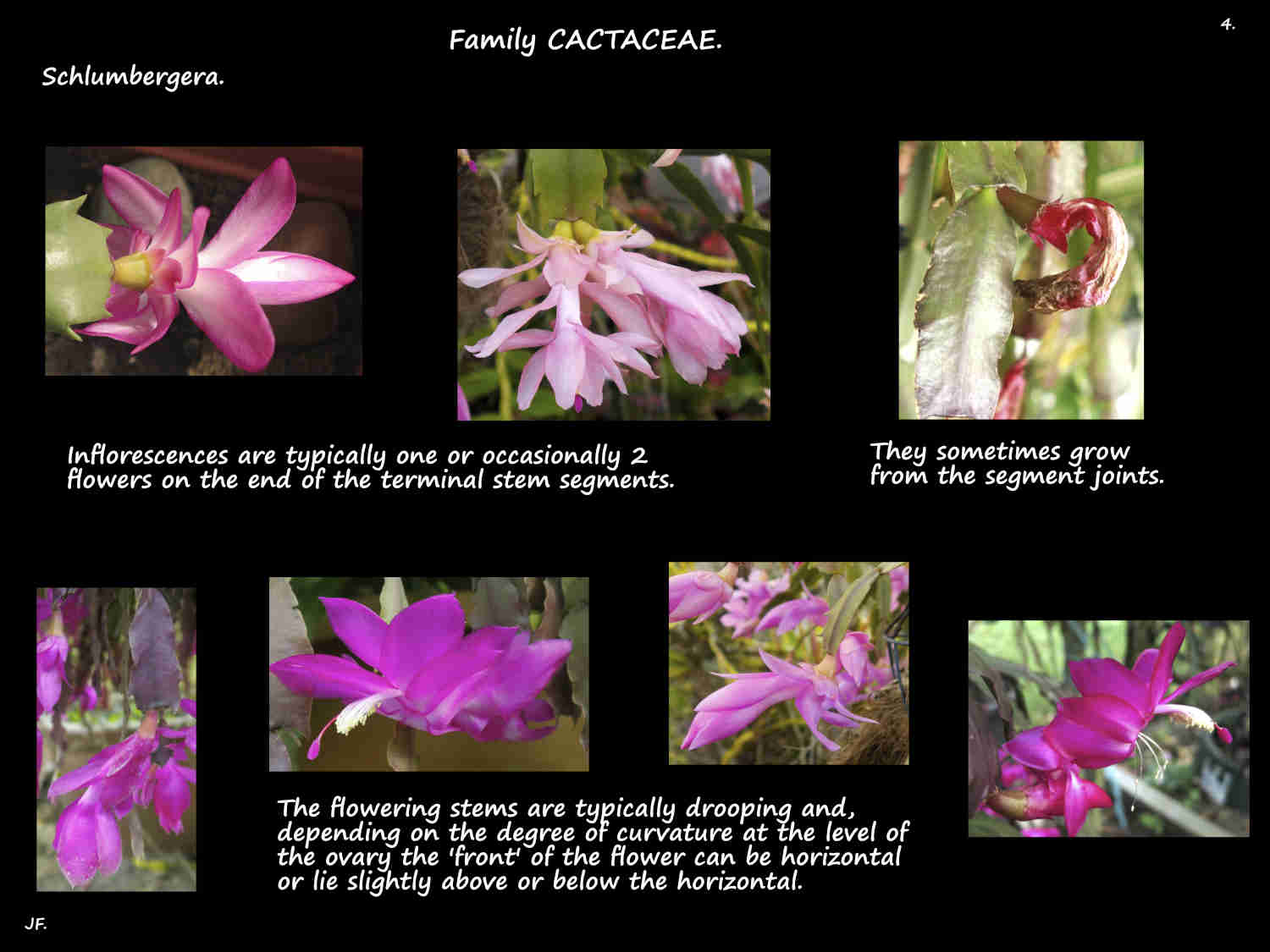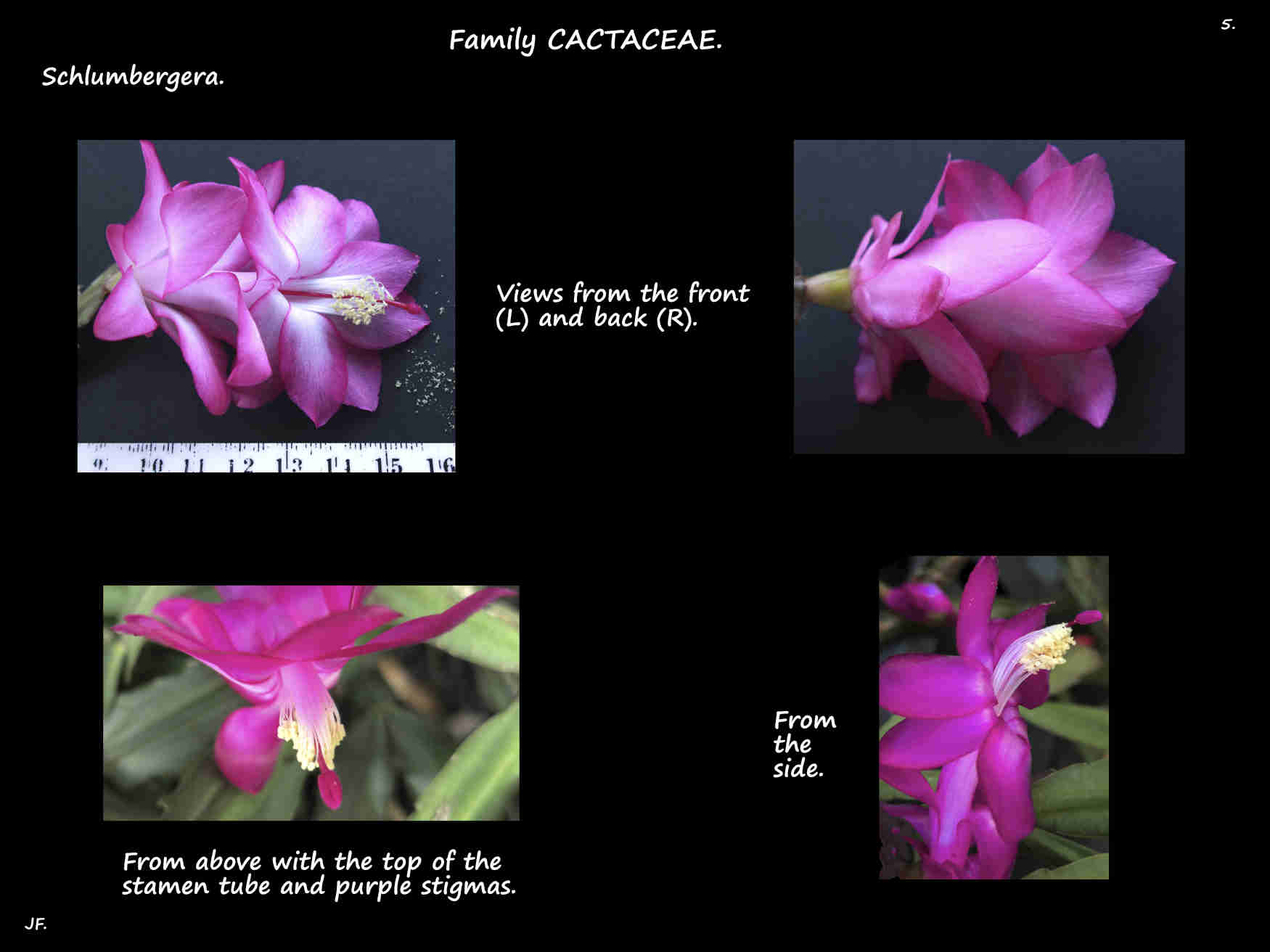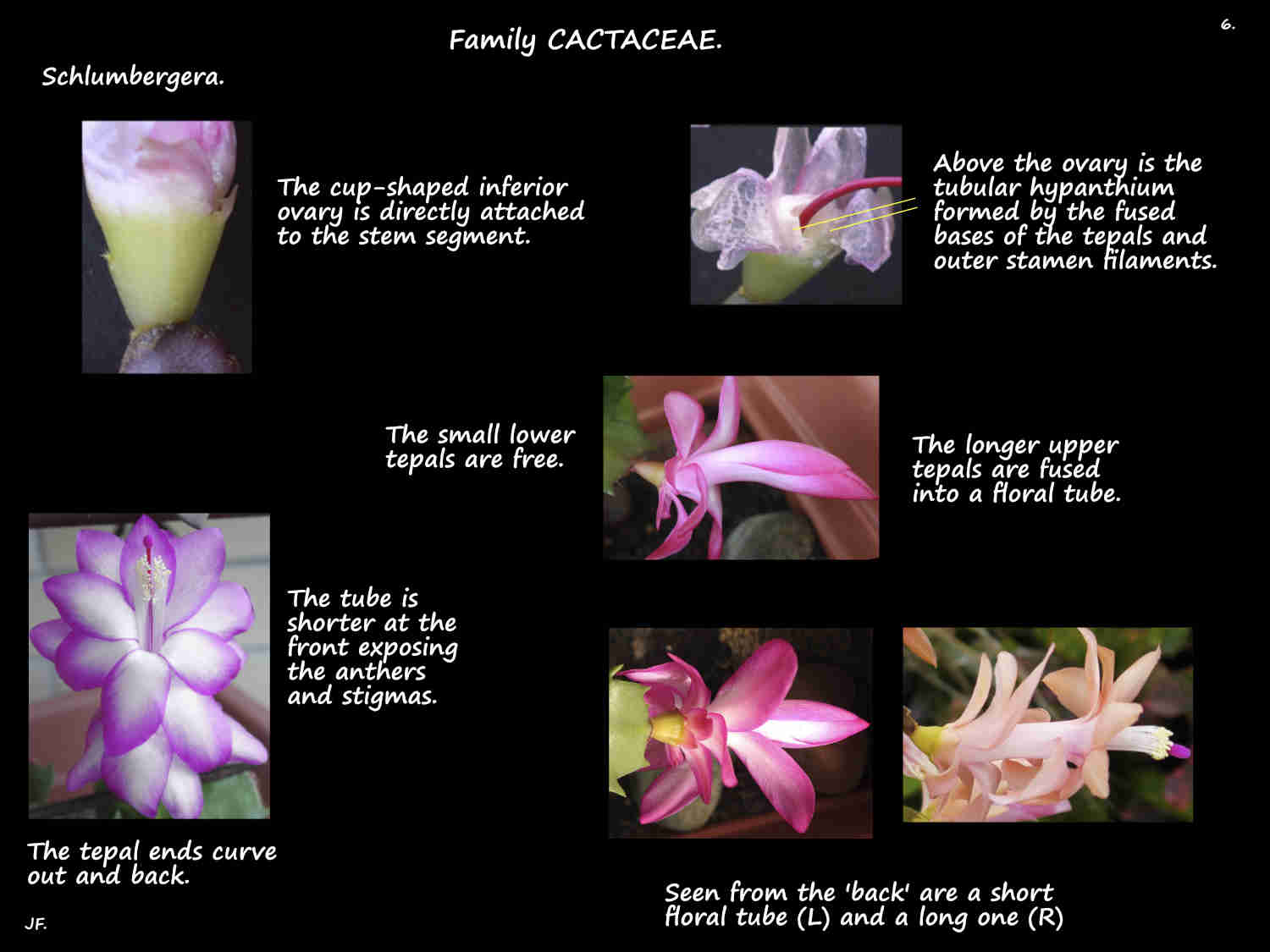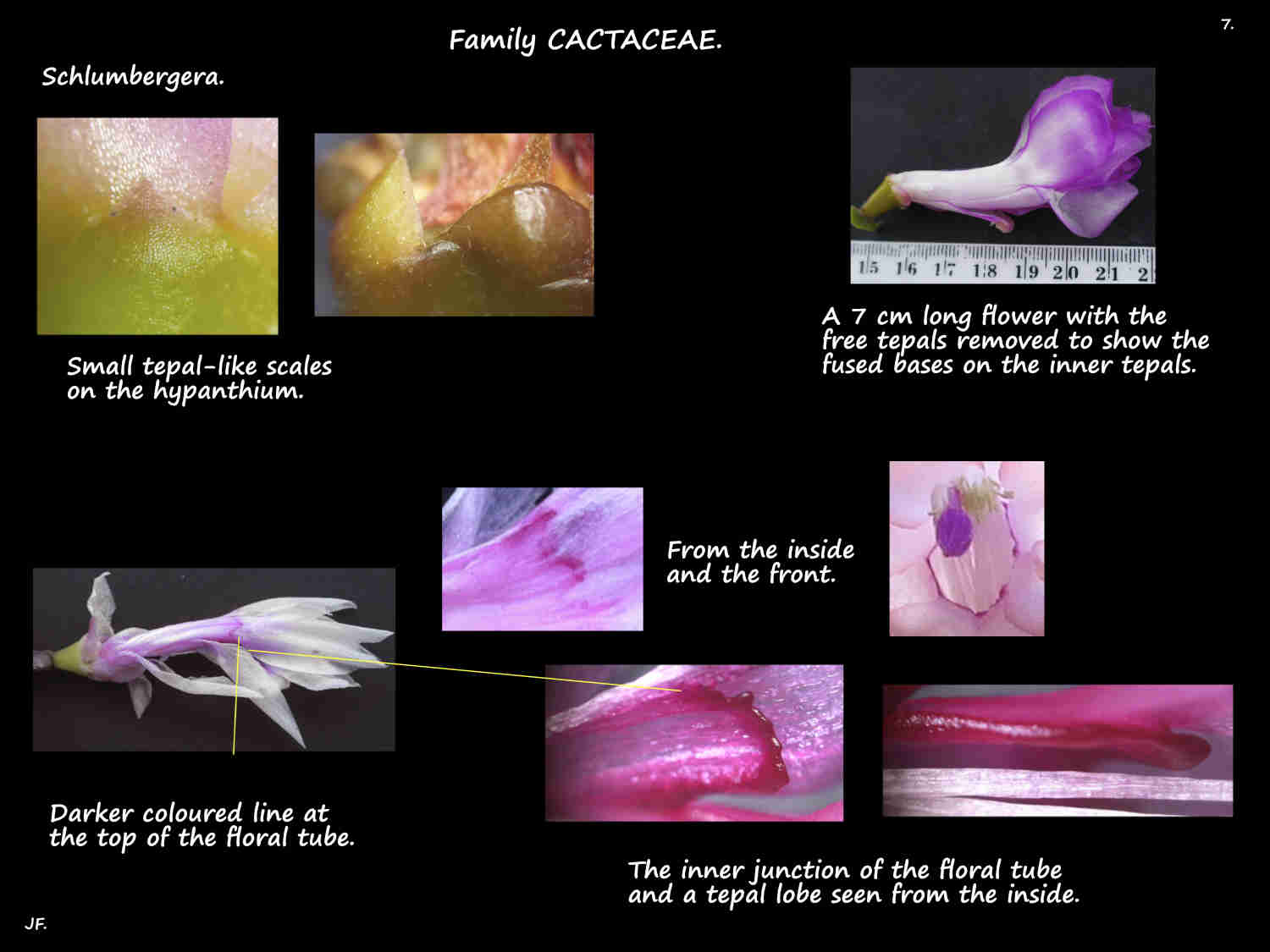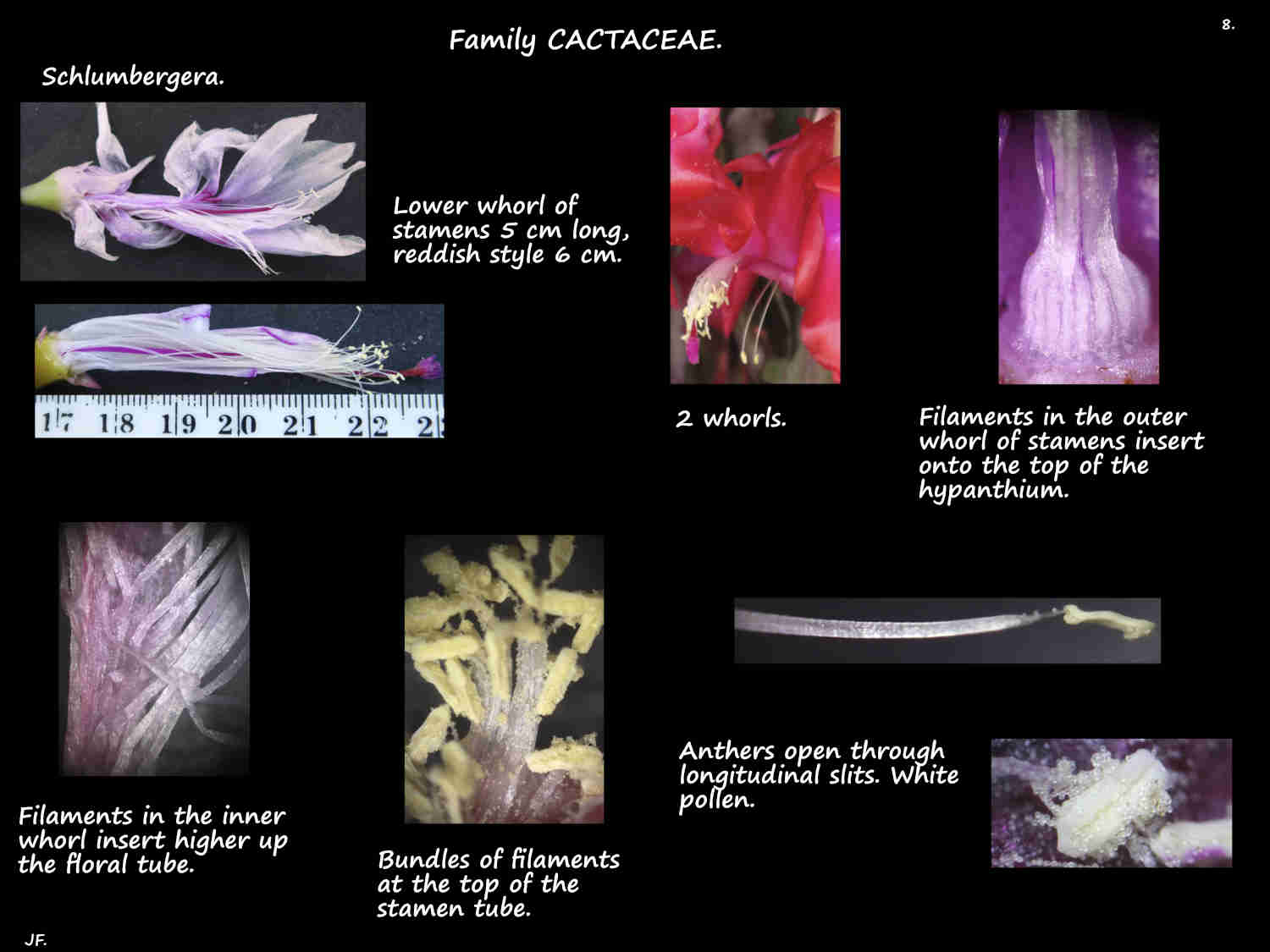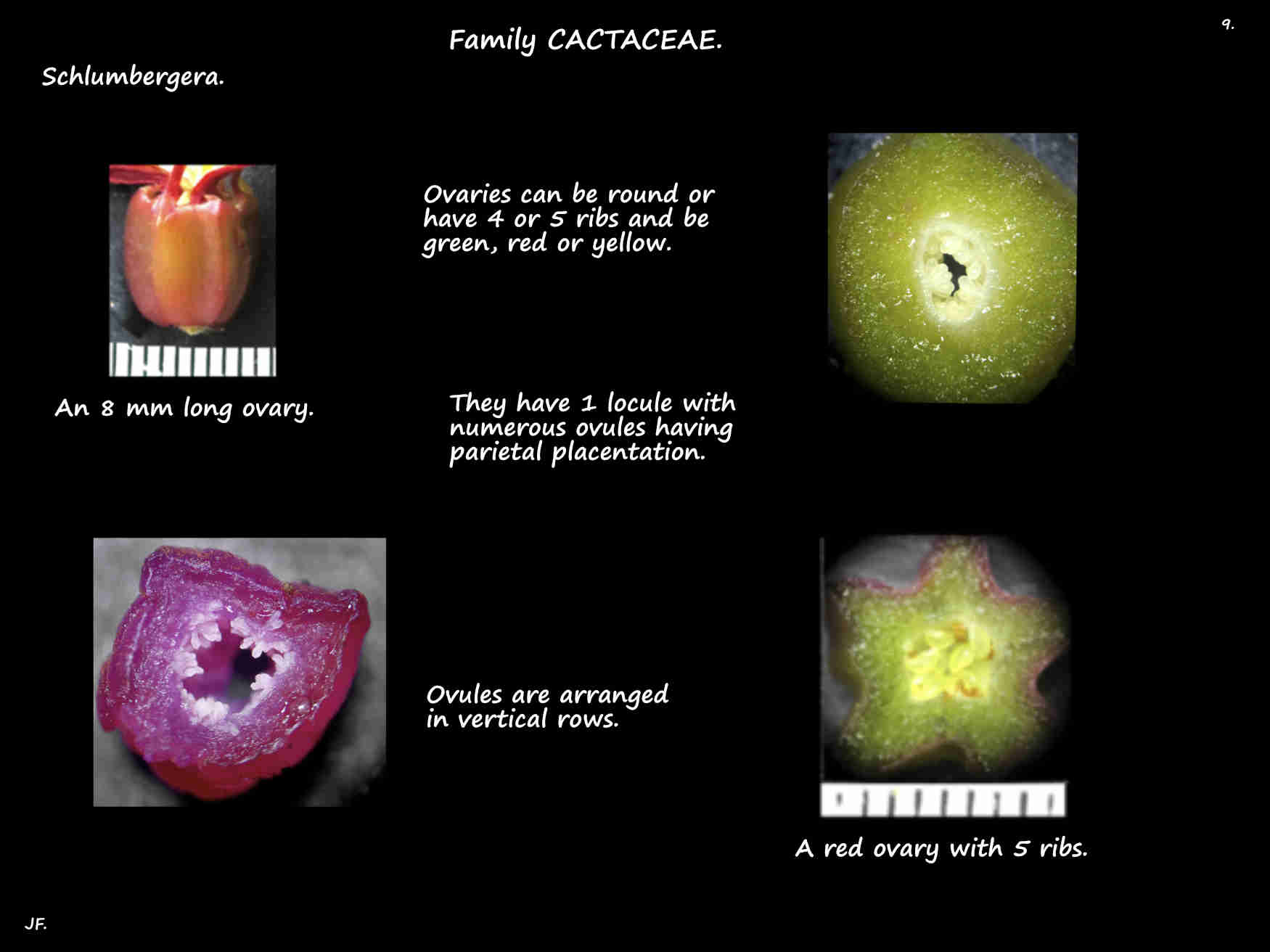Schlumbergera.
Native to mountain areas in S.E. Brazil Schlumbergera are in Family Cactaceae > Subfamily Cactoideae > Tribe Rhipsalideae.
The older name of Zygocactus is now only seen in horticulture.
There are 6 to 9 (11) species depending on how strictly the genus is defined.
Native plants have aerial roots and grow on trees and rocks.
Plants can be prostrate and scramble along the surface or be erect or pendulous.
The much-branched stems can be from 30 cm long to more than 1 m.
Stems are green to dark green but the older basal ones may look woody when the surface layer becomes brown.
The fleshy stems are divided into segments up to 8 cm long.
In two species the stem segments are round but the rest have flattened stems that may become more rounded at the base of the plant.
There are no leaves with photosynthesis carried out by other modified parts.
Cladodes are modified stems and phyllodes are modified leaf petioles or midribs.
On flattened stems the segments can be oblong, rectangular or obovate.
Some have a thick midrib with 2 (3) thinner wings.
Segments can have 2 teeth at the top with smooth edges or have 2 to 4 teeth or notches on each side.
The teeth can be blunt (dentate, crenate or scalloped) or pointed (serrate).
An areole is a small discrete area that differs in any way from the surrounding surface.
In Cactaceae areoles have small clusters of bristles, woolly hairs (felt) or spines or a mix of these.
In Schlumbergera species with rounded stems the areoles are arranged in longitudinal rows or spirally.
With flattened stems they are commonly on the segment edges where they may be in or between the axils of the notches or teeth.
Occasionally they may be scattered on the stem surface.
The longer terminal composite flowering areoles are different being formed by the fusion of a number areoles.
Solitary drooping or horizontal flowers, with no stalk mainly grow from the areoles on the end of the terminal segment.
Some may grow from the lower joints or occasionally on the sides.
Flowers, from 4 to 11 cm long have up to 30 perianth segments or tepals.
The outer tepals are like sepals and the longer inner ones are more petal-like.
The tepal bases and some of the stamens are fused into a tube or hypanthium a few cms long that is attached to the top of the inferior ovary.
The outer surface may be smooth or have small tepal-like scales.
Nectar collects in the base of the hypanthium.
Flowers can be regular and radially symmetric but most are strongly bilaterally symmetric.
The short outer or lower tepals are free and curve out or backwards.
In most species the bases of the longer inner tepals are fused into a floral tube.
The ‘front’, outer or lower part of the tube is shorter than the ‘back’ giving an oblique opening.
The free tips of the inner tepals curve out or back.
The petal-like tepals are white, red, purple or pink but cultivars can also be yellow or orange.
In most species the many stamens are in two sections.
The lower ones, inserted onto the top of the hypanthium are free.
The other stamens are inserted higher up on the floral or perianth tube.
Their filaments are fused into bundles that together form a tube around the style.
The anthers open through longitudinal slits.
The single dark red or purple style passes through the stamen tube.
The up to 8 stigma lobes and the anthers extend past the top of the floral tube (but not its lobes).
The inferior ovary can be round or have 4 or 5 ribs.
The single locule has numerous ovules in vertical rows.
The fruit are fleshy round or pear-shaped white green yellow or red berries with 1 mm dark seeeds.
J.F.

